Python Automation Scripts for Raspberry Pi: Top Projects & Tips
Category: Embedded Systems
Unlocking Raspberry Pi Automation with Python Scripts
If you've landed here, you're likely a tech enthusiast, hobbyist, or developer looking to harness the power of Python automation scripts on your Raspberry Pi. Maybe you’ve experimented with the basics but want to elevate your projects by automating tasks like sensor data collection, device control, or network monitoring without constantly tapping away at commands. Or you might be seeking efficient ways to integrate Python scripting into embedded systems development, saving valuable time and boosting project reliability.
This post is designed specifically for you: someone with at least intermediate knowledge of Raspberry Pi and Python, who wants practical, well-structured guidance on implementing automation scripts to streamline your workflows and creative projects. We’ll walk through the essential concepts, popular automation use cases, best practices, and valuable script examples that you can adapt right away.
Unlike generic how-to articles, this guide provides a comprehensive roadmap tailored to Raspberry Pi’s unique capabilities, addressing your need for actionable insights committed to elevating your microcontroller and programming skills. Read on to discover proven methods and clever automation ideas that can transform your Raspberry Pi from a hobby board into a powerful home automation or embedded systems tool.
- Unlocking Raspberry Pi Automation with Python Scripts
- Understanding Raspberry Pi Automation: Why Python is the Perfect Fit
- Setting Up Your Raspberry Pi for Python Automation
- Key Python Libraries for Raspberry Pi Automation
- Automating GPIO Controls: Practical Python Scripting for LEDs, Sensors, Relays, and Motors
- Scheduling Tasks and Scripts on Raspberry Pi
- File and Data Automation: Handling File Management, Logging, and Data Processing with Python Scripts
- Networking Automation with Python on Raspberry Pi
- Integrating APIs and Web Services for Automation: Using Python to Connect Raspberry Pi Projects with Web APIs
- Debugging and Optimizing Automation Scripts: Best Practices for Reliable, Efficient Raspberry Pi Python Automation
- Advanced Automation Ideas and Use Cases: Inspiring Projects for Raspberry Pi with Python
Understanding Raspberry Pi Automation: Why Python is the Perfect Fit
At its core, automation involves creating scripts or programs that perform repetitive or complex tasks without manual intervention. On the Raspberry Pi, automation can range from scheduled sensor readings and data logging to remote device control and home automation systems. Automating these processes not only improves efficiency but also enhances the reliability and scalability of your projects, freeing you to focus on higher-level creative or development tasks.
Python stands out as the ideal programming language for Raspberry Pi automation for several key reasons:
-
Versatility Across Use Cases
Python’s flexibility lets you automate a wide array of activities—from hardware interfacing with GPIO pins and serial devices to networking, web scraping, and data processing. Whether you’re controlling LEDs, collecting sensor data, or managing servers remotely, Python adapts to your specific project requirements effortlessly. -
Extensive Standard and Third-Party Libraries
Python’s large ecosystem features libraries such asRPi.GPIOandgpiozerofor hardware control,requestsandparamikofor network automation, and powerful data libraries likepandasandmatplotlibfor handling and visualizing information. This extensive toolkit dramatically shortens development time and elevates your automation capabilities. -
Strong Community and Support
The Raspberry Pi and Python communities are vibrant and continually growing. This means abundant tutorials, forums, and open-source projects that help troubleshoot issues and inspire innovation. Leveraging this community support is invaluable when building or scaling automation solutions on your Raspberry Pi.
Harnessing Python for Raspberry Pi automation combines ease of programming, powerful functionality, and community resources—making it the definitive choice for transforming your microcontroller projects into robust, automated systems.
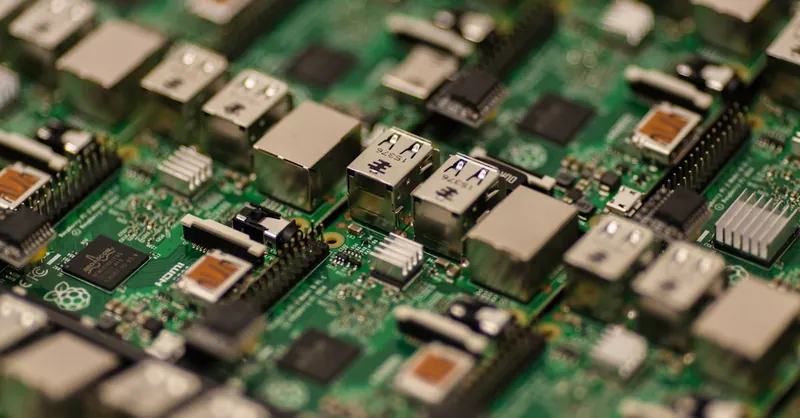
Image courtesy of Craig Dennis
Setting Up Your Raspberry Pi for Python Automation
Before diving into Python automation scripts on your Raspberry Pi, it’s crucial to establish a robust and optimized environment tailored for seamless development and deployment. The foundation starts with selecting the right operating system, installing the appropriate Python version, and configuring essential dependencies to fully leverage Raspberry Pi’s automation potential.
Choosing the Optimal Raspberry Pi OS
For automation projects, Raspberry Pi OS (formerly Raspbian) remains the most recommended choice due to its stability, extensive hardware support, and native compatibility with Python. You can choose between:
- Raspberry Pi OS Lite (minimal, command-line interface) ideal for headless automation servers or lightweight projects.
- Raspberry Pi OS with Desktop for projects requiring GUI interaction or when using development tools locally.
You can download the latest Raspberry Pi OS images via the official Raspberry Pi website and flash them onto a microSD card using tools like Raspberry Pi Imager or balenaEtcher. Ensuring your OS is up-to-date with the latest security patches and performance improvements is vital:
sudo apt update && sudo apt full-upgrade -y
Installing and Managing Python for Automation
Most Raspberry Pi OS versions come pre-installed with Python 3, but automation scripts often benefit from the latest Python releases or isolated environments:
- Verify Python Installation
Check your current Python version with:
python3 --version
If it’s outdated for your project requirements, consider installing a newer version from source or using package managers.
- Set Up Virtual Environments
Isolate your automation script dependencies using Python’s built-in virtual environment module to avoid conflicts:
sudo apt install python3-venv
python3 -m venv automation-env
source automation-env/bin/activate
This approach ensures your Python automation projects run cleanly, unaffected by global package updates.
Installing Essential Python Libraries and Dependencies
Automation on Raspberry Pi often involves hardware interfacing, networking, and data management — each requiring specific libraries. Begin by installing key packages with pip inside your virtual environment:
-
GPIO and Hardware Control:
bash pip install RPi.GPIO gpiozero -
Networking and Web Automation:
bash pip install requests paramiko -
Data Handling and Visualization:
bash pip install pandas matplotlib
Additionally, some libraries may require system-level dependencies. For example, to use camera modules or sensor interfaces, install:
sudo apt install python3-picamera python3-spidev python3-smbus
Automating Script Execution on Boot
To truly automate processes, configure your Raspberry Pi to run Python scripts automatically on startup. Common methods include:
- Adding scripts to
/etc/rc.localfor simple executions. - Creating systemd services for more control and monitoring.
Setting up these automation triggers ensures your Raspberry Pi executes the necessary scripts without manual intervention, crucial for embedded systems and remote deployments.
By carefully setting up your Raspberry Pi environment with the right OS, Python version, and automation-centric libraries, you lay down a solid groundwork for developing efficient, reliable Python automation scripts that can unlock powerful applications in embedded systems and IoT projects.

Image courtesy of Christina Morillo
Key Python Libraries for Raspberry Pi Automation
When developing Python automation scripts for Raspberry Pi, leveraging the right libraries is crucial to efficiently interface with hardware components, manage system processes, and schedule tasks. Here is an overview of the most popular and essential Python modules that empower Raspberry Pi automation projects with robust capabilities and simplified codebases.
Hardware Interaction Libraries
-
RPi.GPIO
TheRPi.GPIOlibrary is a foundational tool for controlling the Raspberry Pi’s GPIO (General Purpose Input/Output) pins. It provides a straightforward interface to read input states from buttons or sensors and to output signals to devices like LEDs, relays, or motors. Its low-level access makes it highly flexible, allowing precise control over pin modes, event detection, and PWM (Pulse Width Modulation). -
gpiozero
Built on top ofRPi.GPIO,gpiozerooffers a more Pythonic and user-friendly approach to GPIO handling. It abstracts common tasks into high-level classes likeLED,Button, andServo, simplifying hardware interactions and accelerating development. This library is especially favored for beginners and rapid prototyping but also supports advanced use cases with custom components. -
Other Hardware Libraries
Depending on your hardware, additional modules such aspicamerafor controlling the Raspberry Pi camera module,spidevfor SPI device communication, andsmbusfor I2C interfacing can be vital. These libraries extend automation possibilities to include multimedia control, sensor integration, and communication with a wide variety of peripherals.
System and Process Automation Modules
-
subprocess
Python’s built-insubprocessmodule lets your scripts securely spawn new processes, connect to their input/output/error pipes, and retrieve their return codes. This is essential for running shell commands, executing external scripts, or managing system-level tasks within an automation framework on the Raspberry Pi. -
os and sys
Theosandsysmodules enable powerful interactions with the operating system such as file system manipulations, environment variable access, and exit status management. Combined, they are indispensable for creating flexible and resilient automation workflows that respond dynamically to system conditions.
Scheduling and Time-based Automation
-
schedule
Theschedulelibrary is a lightweight, expressive Python module for running periodic jobs. It allows you to define automation tasks that execute at specified intervals (e.g., every 10 minutes, daily at 6 AM) without relying on cron jobs or external schedulers. This makes your Python automation scripts self-contained and easy to maintain. -
time and datetime
Core Python modules liketimeanddatetimecomplement scheduling by facilitating precise time manipulation and delays. They serve critical roles in timestamping sensor data, managing timed loops, and handling time zone-aware scheduling in more complex automation scripts.
Together, these Python libraries form a comprehensive toolkit tailored for Raspberry Pi automation—from direct hardware control and system process management to elegant, code-driven scheduling. Mastering their usage will dramatically enhance your ability to develop sophisticated, reliable automation scripts that fully exploit the Raspberry Pi’s hardware and software environment.
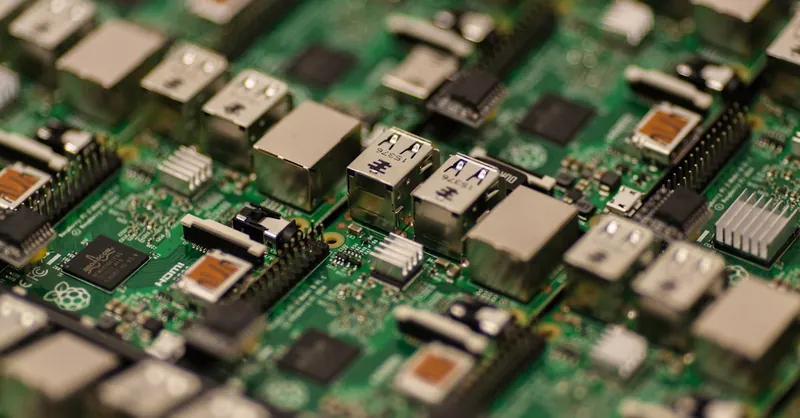
Image courtesy of Craig Dennis
Automating GPIO Controls: Practical Python Scripting for LEDs, Sensors, Relays, and Motors
One of the most powerful and accessible ways to harness your Raspberry Pi’s potential is through automating GPIO (General Purpose Input/Output) controls using Python. By scripting interactions with hardware like LEDs, sensors, relays, and motors, you can create responsive automation systems that react intelligently to environmental cues or remote commands—transforming simple electronics projects into advanced embedded solutions.
Python’s RPi.GPIO and gpiozero libraries provide intuitive APIs to interface with GPIO pins for reading inputs or driving outputs. For example, automating an LED indicator can be accomplished by scripting pin states to turn on/off or blink based on sensor data or time scheduling. Similarly, sensors such as temperature probes or motion detectors can be queried automatically, with the Python script processing their signals to trigger other devices like relays or motors, effectively constructing smart control loops.
Core Concepts for GPIO Automation Scripts
-
Pin Configuration and Modes
Before any control logic, set GPIO pins to input or output modes usingGPIO.setup()(RPi.GPIO) or hardware objects likeLED(pin)(gpiozero). Establishing pull-up or pull-down resistors ensures reliable readings from sensors and switches. -
Event-Driven Responses
Rather than constant polling, many scripts benefit from event detection callbacks—for instance, triggering an action the moment a motion sensor detects movement. Both libraries support interrupts and event listeners to enhance script efficiency and responsiveness. -
PWM and Motor Control
Automation involving dimmable LEDs or motor speed management relies on PWM (Pulse Width Modulation). Python libraries allow easy PWM setup where duty cycles can be adjusted dynamically, enabling precise physical device control through clean and compact code. -
Error Handling and Cleanup
Robust scripts include error handling to manage unexpected hardware disconnections or state conflicts. Equally important is gracefully cleaning up GPIO states upon script exit to avoid leaving pins in undefined states that could damage hardware or affect subsequent executions.
Example Automation Scenarios Using Python GPIO Scripts
- Automated Lighting Control: Script LED arrays to indicate status based on sensor thresholds or system health metrics, enabling visual feedback without manual checks.
- Sensor-Triggered Relay Activation: Monitor environmental sensors (e.g., humidity or presence detectors) to switch relays controlling fans, pumps, or alarms automatically.
- Motorized Movement Systems: Control servo or DC motors for robotics or home automation tasks such as automated blinds or security cameras, enabling smooth, programmable movement triggered by Python logic.
By mastering GPIO automation scripting with Python, you unlock endless possibilities for creating responsive, intelligent hardware projects on your Raspberry Pi—all controlled remotely or autonomously. This approach not only enhances the functionality of your microcontroller projects but also lays a critical foundation for sophisticated embedded systems and IoT applications.
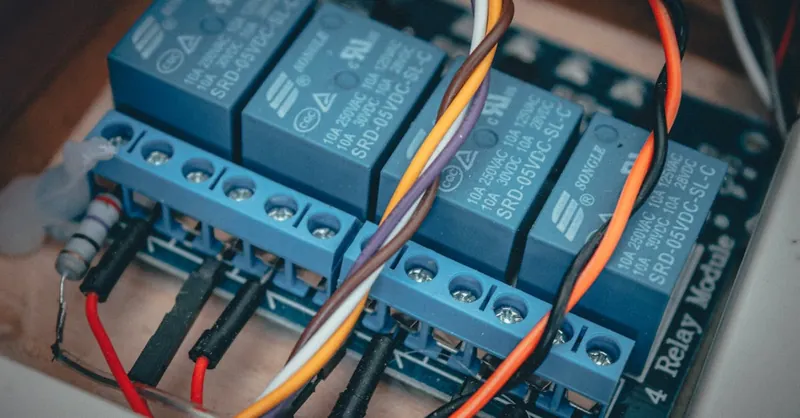
Image courtesy of Malte Luk
Scheduling Tasks and Scripts on Raspberry Pi
Automating the execution of Python scripts at regular intervals or specific times is essential to maintain consistent, hands-free operation in Raspberry Pi projects. Two primary methods dominate task scheduling on Raspberry Pi: cron jobs, the traditional Linux scheduler, and Python-based scheduling libraries like schedule. Leveraging these techniques enables your automation scripts to run seamlessly in the background, ensuring timely sensor data collection, device control, or maintenance tasks without manual intervention.
Using Cron Jobs for Reliable Time-Based Automation
Cron is a powerful and lightweight job scheduler native to Unix-like systems, including Raspberry Pi OS. It allows you to run scripts or commands at fixed times, dates, or intervals using crontab configuration files.
Setting Up a Python Script with Cron
- Edit the Cron Table
Open the crontab editor with:
bash
crontab -e
- Add a Scheduled Task
Schedule your Python automation script by adding a line specifying the time and the command, for example:
*/10 * * * * /usr/bin/python3 /home/pi/automation/script.py >> /home/pi/automation/log.txt 2>&1
This runs script.py every 10 minutes, redirecting output and errors to a log file for monitoring.
- Best Practices with Cron Jobs
- Always use absolute paths to Python executables and scripts.
- Include logging to capture script output and errors, which aids debugging.
- Set environment variables if your script depends on them, as cron jobs run in a minimal environment.
- Use
@rebootschedules to run scripts on Raspberry Pi startup for continuous automation.
Cron jobs are ideal for stable, long-term task scheduling, especially when you want lightweight, system-level management of your Python scripts without adding complexity to your codebase.
Leveraging Python Scheduling Libraries for Flexible Automation
For more dynamic and code-centric scheduling inside your Python applications, libraries like schedule provide an elegant way to define tasks programmatically.
Key Features of the schedule Library
- Runs periodic jobs without requiring external schedulers like cron.
- Provides human-readable syntax for specifying intervals, such as
every().hour.do(job_function). - Supports chaining schedules and custom time intervals with ease.
- Runs blocking or background loops to continuously check and execute pending jobs.
Example Usage
import schedule
import time
def read_sensor():
print("Collecting sensor data...")
# Schedule the task every 15 minutes
schedule.every(15).minutes.do(read_sensor)
while True:
schedule.run_pending()
time.sleep(1)
This script will autonomously execute read_sensor() every 15 minutes, making your Python automation self-contained and highly maintainable.
Choosing Between Cron and Python Schedulers
| Criteria | Cron Jobs | Python Scheduling Libraries |
|---|---|---|
| System Integration | Runs outside Python, managed by OS scheduler | Runs inside Python script |
| Complexity | Lightweight, simple time expressions | More flexibility, code-driven |
| Error Logging | External logs needed for output capture | Can integrate logging internally |
| Dependency | No Python dependency once installed | Requires Python environment |
| Startup Execution | Supports @reboot directly |
Must be wrapped in system service |
In many Raspberry Pi automation projects, combining both methods yields robust scheduling: use cron to launch Python scripts at reboot or fixed intervals, while Python schedulers manage sub-tasks or adaptive timing within the script.
Mastering these task scheduling methods empowers you to maintain reliable, hands-free operations for your Raspberry Pi automation projects—ultimately enabling continuous data acquisition, device control, and system monitoring without manual triggers. Integrating cron jobs with Python scheduling libraries creates a scalable automation framework that adapts perfectly to embedded systems and IoT applications you develop.
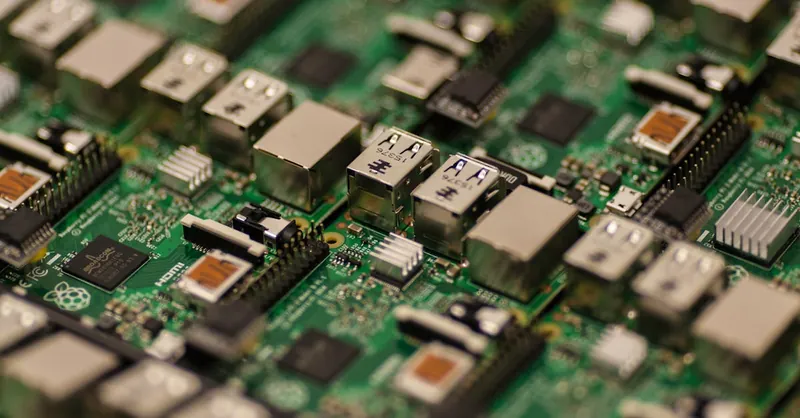
Image courtesy of Craig Dennis
File and Data Automation: Handling File Management, Logging, and Data Processing with Python Scripts
Efficient file and data automation is a cornerstone of any advanced Raspberry Pi project involving sensor integration, data logging, or network data collection. Utilizing Python scripts to automate the tasks of managing files, organizing logs, and processing data empowers your Raspberry Pi to operate as a reliable data acquisition and analysis platform with minimal manual oversight.
Automated file management includes creating organized folder structures, rotating log files to prevent storage overload, and handling data backups seamlessly. Python’s built-in modules such as os, shutil, and glob provide robust functions for navigating directories, moving or archiving files, and cleaning up old logs automatically based on date or size. This level of automation is critical in embedded systems and IoT deployments where continuous data streaming can rapidly consume limited storage on your Raspberry Pi.
Additionally, logging automation ensures that sensor readings, system events, or error reports are timestamped and stored efficiently. Incorporating Python’s logging module allows customizable log formats, multiple logging levels (DEBUG, INFO, ERROR), and output to rotating log files or external storage. Automated logging not only aids in post-operation debugging but also provides rich datasets for system health monitoring and performance optimization.
For data processing automation, Python excels in collecting and analyzing sensor or network data in real-time. Libraries like pandas facilitate data cleaning, aggregation, and transformation, enabling scripts to preprocess raw inputs automatically. These processed datasets can then be saved in structured formats such as CSV or JSON, ready for visualization with tools like matplotlib or integration with cloud-based analytics platforms.
Practical Approaches to File and Data Automation Scripts
-
Automated Directory Setup and Cleanup
Your Python script can check for the existence of data directories on startup, create date-stamped folders for daily logs, and remove or archive files older than a configured retention period—keeping storage optimized without manual effort. -
Dynamic Log Rotation and Management
Using Python’slogging.handlers.RotatingFileHandlerorTimedRotatingFileHandlerenables automatic segmentation of log files by size or time intervals, preventing files from becoming unwieldy and simplifying log tracking. -
Scheduled Data Aggregation and Export
Scripts can accumulate sensor data over time, perform periodic calculation of averages, maxima, or other metrics, then write summarized data files automatically—making downstream data analysis streamlined and accessible. -
Real-Time Data Parsing from Network Sources
Python’srequestsorsocketlibraries can auto-fetch data from APIs or IoT hubs, parse JSON or XML payloads, and update local data stores or trigger further processing, effectively automating network-based data workflows.
By mastering file system automation and data processing with Python scripting on your Raspberry Pi, you greatly enhance your project’s autonomy, reliability, and scalability. These capabilities unlock sophisticated use cases such as continuous environmental monitoring, automated diagnostics, or seamless integration with cloud analytics, marking a significant step up from manual data handling to fully automated embedded solutions.

Image courtesy of Brett Sayles
Networking Automation with Python on Raspberry Pi
Automating network-related tasks on your Raspberry Pi using Python extends your project capabilities beyond local hardware control to real-time system monitoring, device status management, and proactive alerting. Python’s extensive networking modules and APIs make it straightforward to build scripts that monitor network health, automate remote device checks, or send notifications based on network events—critical functions in embedded systems and IoT deployments where uptime and connectivity are paramount.
Using modules like socket, requests, and paramiko, you can tailor automation scripts that handle everything from simple ping sweeps to SSH device interrogation, or REST API integration for cloud services. Automated network monitoring scripts track parameters such as latency, packet loss, or device availability continuously—logging results and triggering alerts via email or messaging platforms when anomalies occur. This ensures your Raspberry Pi can serve as a lightweight yet powerful network watchdog, capable of detecting failures or intrusions and responding immediately.
Practical Python networking automation techniques include:
-
Automated Network Device Status Checks
Schedule Python scripts to ping critical network devices periodically, verifying connectivity and uptime. Tools likesubprocesscombined withpingcommands or thesocketlibrary enable low-level network probing. -
SSH Automation for Remote Device Management
Useparamikoto programmatically connect to remote devices over SSH, run diagnostic commands, gather system metrics, or deploy configuration changes without manual login. -
API Integration and Data Fetching
Leverage therequestslibrary to interact with REST APIs, pulling device health data or pushing status updates to dashboards and cloud platforms, automating data flows between your Raspberry Pi and larger infrastructures. -
Alerting and Notification Systems
Integrate Python scripts with SMTP for email alerts, or APIs for messaging apps like Telegram or Slack, to automatically notify administrators or users when network thresholds are breached, elevating your project’s responsiveness.
By incorporating network monitoring and automation with Python on Raspberry Pi, you create smarter, self-managing embedded systems that mitigate downtime risks and enhance security. This multi-faceted capability is indispensable for home automation hubs, industrial IoT gateways, or any distributed microcontroller setup where continuous connectivity is crucial.
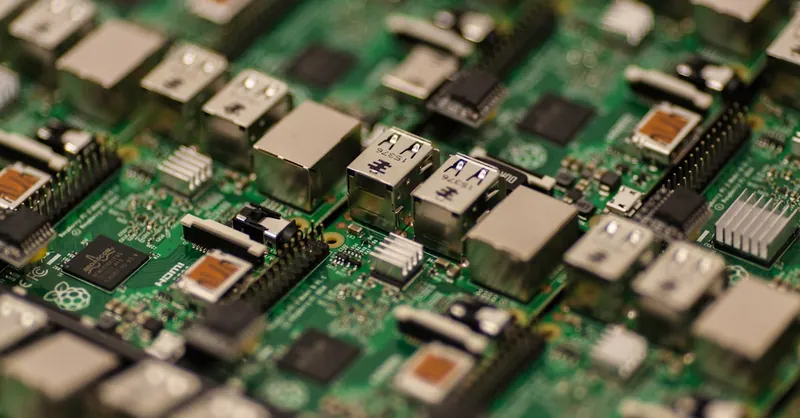
Image courtesy of Craig Dennis
Integrating APIs and Web Services for Automation: Using Python to Connect Raspberry Pi Projects with Web APIs
Expanding your Raspberry Pi automation scripts to interact with web APIs and online services dramatically enhances the flexibility and intelligence of your projects. Leveraging Python’s rich networking capabilities, you can connect your Raspberry Pi to a plethora of external platforms—such as weather data providers, IoT cloud services, or social media APIs—enabling your automation workflows to react dynamically to real-world information or remotely trigger actions.
Integrating APIs involves sending HTTP requests, typically using the powerful and easy-to-use requests library, then parsing JSON or XML responses to extract meaningful data. This enables scenarios such as:
-
Real-Time Environmental Automation: Fetch current weather conditions from public APIs like OpenWeatherMap or WeatherAPI to adjust home heating, ventilation, or irrigation systems automatically.
-
IoT Platform Synchronization: Connect your Raspberry Pi with IoT ecosystems such as AWS IoT, Google Cloud IoT, or open-source hubs like ThingsBoard to send sensor data, receive control commands, or update device states in real-time, fostering scalable and maintainable embedded infrastructures.
-
Remote Monitoring and Alerts: Use APIs from messaging platforms like Telegram, Slack, or email services to send notifications triggered by sensor thresholds or system events, ensuring timely operator intervention or automated corrective responses.
-
Data Enrichment and Automation Triggers: Combine data from multiple APIs, such as geolocation services or calendar integrations, to create context-aware automation—for instance, turning on security cameras only when you’re away or scheduling energy-saving modes based on occupancy prediction.
Best Practices for API Integration with Python on Raspberry Pi
-
Manage API Keys Securely: Store credentials in environment variables or encrypted files rather than hardcoding them in scripts to safeguard access.
-
Handle Rate Limits and Errors Gracefully: Implement retry logic, exponential backoff, and exception handling to maintain robust operation despite network instability or API downtime.
-
Optimize Data Requests: Cache API responses locally when feasible, and query APIs only as frequently as necessary to minimize latency and bandwidth usage on your Raspberry Pi.
-
Use Asynchronous Requests for Efficiency: Employ asynchronous libraries like
aiohttpwhen integrating multiple APIs or handling large volumes of data concurrently, facilitating responsive automation without blocking crucial processes.
By skillfully combining Python automation scripts with API and web service integrations, your Raspberry Pi projects transcend local hardware control to become smart, connected systems capable of adapting to external data and collaborating with cloud services. This synergy unlocks powerful new use cases in home automation, environmental monitoring, and IoT application development, positioning your Raspberry Pi as an indispensable node within the expanding ecosystem of intelligent, networked devices.

Image courtesy of Jakub Zerdzicki
Debugging and Optimizing Automation Scripts: Best Practices for Reliable, Efficient Raspberry Pi Python Automation
Crafting robust Python automation scripts for Raspberry Pi projects requires not only developing functional code but also focusing on debugging techniques, error handling, and performance optimization to ensure reliability in long-running automated tasks. Given that many Raspberry Pi-based automation setups operate unattended for extended periods—such as environmental monitoring, home automation, or network services—implementing sound practices to detect, recover from, and prevent failures is critical.
Effective Error Handling Strategies
-
Use Try-Except Blocks Judiciously
Wrapping potential failure points intry-exceptstatements allows your script to catch exceptions gracefully instead of crashing abruptly. For automation tasks, catch specific exceptions (e.g.,IOError,ValueError, or hardware-related exceptions) to provide meaningful diagnostics or fallback behaviors. -
Implement Retry Logic for Transient Issues
Network calls, sensor reads, or hardware interactions may intermittently fail due to unstable connections or timing glitches. Integrate retry mechanisms with configurable delays and maximum attempt counts to enhance script resilience without manual intervention. -
Logging Errors and Warnings
Employ Python’s built-inloggingmodule to record error messages, stack traces, and warning conditions systematically. Use rotating log files to prevent disk overflow on your Raspberry Pi and include timestamps for precise troubleshooting. -
Fallback and Safe States in Hardware Control
When interfacing with physical components such as relays or motors, your scripts should define fallback procedures to put devices into safe states upon errors—thus preventing hardware damage or unsafe operations during automation failures.
Optimizing Script Performance and Resource Usage
-
Minimize Blocking Operations
Avoid long blocking calls or infinite loops without pauses. Usetime.sleep()strategically to reduce CPU load while maintaining responsiveness for event-driven scripts, conserving Raspberry Pi’s limited processing power. -
Profile and Identify Bottlenecks
Use Python’s profiling tools (cProfile,timeit) to pinpoint slow functions or redundant processing. Refactor computationally expensive parts or heavy I/O operations to streamline automation workflows. -
Efficient Resource Management
Close file handles, network connections, and GPIO resources promptly. Implement context managers (withstatements) to automatically handle resource cleanup and prevent memory leaks or peripheral lockups. -
Use Asynchronous Programming When Appropriate
For scripts dealing with multiple I/O-bound tasks like network requests and hardware polling, adopting asynchronous programming paradigms withasynciocan improve efficiency and responsiveness.
Ensuring Reliability in Long-Running Tasks
-
Daemonize or Create Systemd Services
Running your automation scripts as systemd services or daemons ensures automatic restart upon failure, startup on boot, and easier process monitoring, boosting long-term reliability. -
Health Checks and Watchdogs
Implement periodic self-check routines within scripts or use external watchdog tools to verify the process health. On failure detection, scripts can attempt restart or send alerts for manual intervention. -
Version Control and Configuration Management
Manage automation script versions through Git or similar systems, and externalize configurable parameters in separate files or environment variables. This practice facilitates maintainability and safe updates without breaking existing functionality.
By systematically integrating robust error handling, performance tuning, and operational safeguards, you elevate your Raspberry Pi Python automation scripts from simple prototypes to dependable components suitable for critical embedded systems and scalable IoT applications. These best practices not only reduce downtime and maintenance but also enhance the overall effectiveness and professionalism of your automation projects.
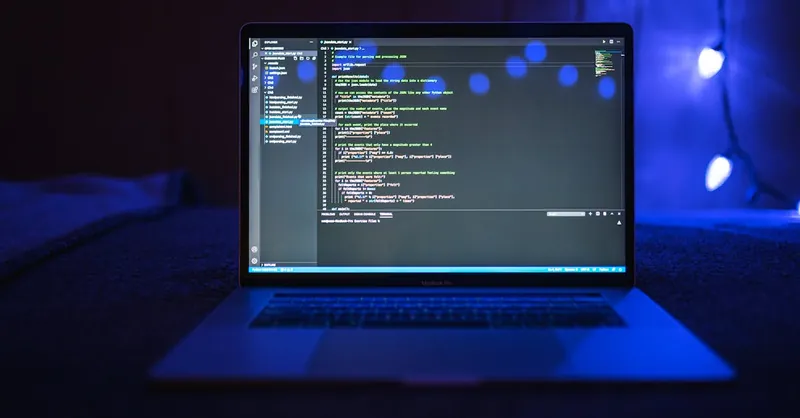
Image courtesy of Nemuel Sereti
Advanced Automation Ideas and Use Cases: Inspiring Projects for Raspberry Pi with Python
Taking your Raspberry Pi automation skills to the next level means exploring advanced automation projects that blend hardware control, sensor integration, and Python scripting into powerful, real-world applications. These projects not only showcase the versatility of the Raspberry Pi but also provide practical templates to inspire your own innovations in home automation, security, and environmental monitoring.
Smart Home Automation Systems
Harness the Raspberry Pi’s GPIO capabilities and Python’s automation libraries to build comprehensive smart home systems. Examples include:
- Intelligent Lighting Control: Automate lighting based on occupancy sensors, ambient light readings, or time schedules, reducing energy consumption and enhancing convenience.
- Thermostat and HVAC Automation: Use temperature and humidity sensors to regulate heating, ventilation, and air conditioning, adjusting settings dynamically with Python scripts running on the Pi.
- Voice-Activated Device Control: Integrate voice assistants or custom voice recognition modules for hands-free operation of appliances, powered by Python APIs and Raspberry Pi hardware.
DIY Security and Surveillance Solutions
Python automation scripts elevate Raspberry Pi projects into robust security systems capable of monitoring, alerting, and recording autonomously:
- Motion Detection and Alerts: Combine camera modules with OpenCV and Python automation to detect movement, capture images or video, and send instant notifications via email or messaging apps.
- Access Control Systems: Employ RFID readers or keypad interfaces to control door locks, logging access attempts with timestamps and providing real-time alerts for suspicious activity.
- Intrusion Detection and Alarm Automation: Utilize sensors like PIR, magnetic reed switches, or vibration sensors interfaced with Python scripts to trigger alarms, activate lighting, or notify homeowners remotely.
Environmental Monitoring and Data-Driven Automation
Leverage the Raspberry Pi’s ability to interface with diverse sensors and automate data workflows for environmental monitoring applications that inform smart decision-making:
- Air Quality and Pollution Tracking: Automatically collect data from gas sensors (e.g., CO2, VOCs), analyze trends with Python data libraries, and trigger ventilation systems when thresholds exceed safe levels.
- Soil Moisture and Irrigation Management: Use soil moisture sensors to automate garden watering schedules, optimizing water usage by integrating weather forecasts via API calls.
- Weather Stations and Climate Logging: Combine temperature, humidity, barometric pressure sensors with data logging and visualization scripts to build customized weather stations that autonomously track and report climate conditions.
Integrating Hardware and Python for Scalable Automation
These advanced use cases illustrate the synergy of hardware interfacing and Python automation on Raspberry Pi, where scripts not only control devices but also analyze sensor inputs, manage networks, and interact with web services to create intelligent, adaptive systems. By modularizing your automation code and employing best practices like event-driven architectures and API integrations, you enable scalable projects that extend from hobbyist prototypes to fully deployed embedded systems or IoT solutions.
Exploring these inspiring projects will deepen your understanding of how Raspberry Pi automation scripts in Python can transform everyday hardware components into sophisticated, interconnected applications. Whether you're building a smart home, enhancing security, or monitoring the environment, combining hardware with Python automation unlocks endless possibilities for innovation and practical impact in your embedded systems development journey.

Image courtesy of Jakub Zerdzicki
